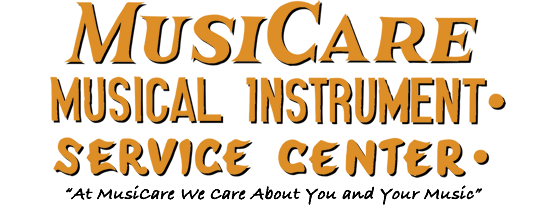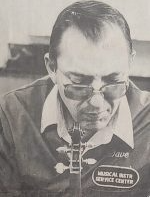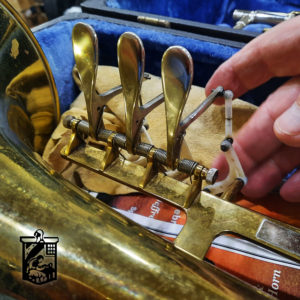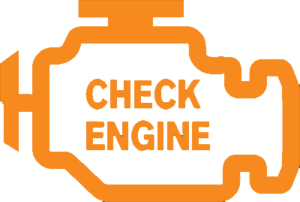By Sally Larsen Bailey, Photos by Robert Bower Post-Register staff
October 28, 1984
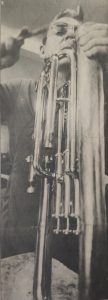 “We repair ‘baroque’ instruments,” says a sign just inside the door of Dave Sevy’s small Park Avenue shop (now 391 W Broadway St.). And a glance around his shop proves there are plenty of instruments that are indeed, “Baroquen.” Sevy’s workbenches are stacked with violins of all sizes, tubas, french horns, flutes, clarinets, even an occasional set of crumhorns or a recorder. Two bass fiddles, a couple of electronic keyboards, and a vibraharp take up floor space.
“We repair ‘baroque’ instruments,” says a sign just inside the door of Dave Sevy’s small Park Avenue shop (now 391 W Broadway St.). And a glance around his shop proves there are plenty of instruments that are indeed, “Baroquen.” Sevy’s workbenches are stacked with violins of all sizes, tubas, french horns, flutes, clarinets, even an occasional set of crumhorns or a recorder. Two bass fiddles, a couple of electronic keyboards, and a vibraharp take up floor space.
“Don’t go into this if you expect to get rich. “ The proprietor comments, peering over the top of a badly wrinkled tuba.
“I make about 4.70 an hour – he explains bending over his workbench patiently tap tap tapping on parts of the dismantled tuba with a rawhide mallet. The tuba he explains is a victim of a couple too many parades with the high school marching band. He straightens up, picks up the brass cylinder, empties out a small piece of metal which shapes the inside of the tube, replaces it with a bigger one, scrutinizes his handiwork, takes up the mallet, and starts tapping again.
An instrument repairman needs the patience of Job and a set of tools that looks like a cross between those of a plumber and a jeweler.
Sevy has been repairing instruments for more than 30 years and never has a shortage of work.
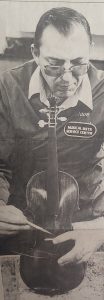 The front doorbell rings and work awaits while Sevy patiently explains the nature of the illness to his customer, and what it will take to make repairs. That’s a duty that he takes very seriously.
The front doorbell rings and work awaits while Sevy patiently explains the nature of the illness to his customer, and what it will take to make repairs. That’s a duty that he takes very seriously.
Most of the shop’s patrons are students, he explains. A clarinet, flute, or tuba is dropped, or moisture collects where it shouldn’t, or a case is slammed on a delicate horn and the victim ends up on Sevy’s bench.
I like the student to authorize the repair bill, he says, at the same time the young musician is likely to get a lecture on how to make sure that the accident never happens again. “Teachers try to make the kids careful”, Sevy says, “but too often they don’t listen.”
Between customers, Sevy moves back to his bench tapping a few more dents out of the tuba, setting the bridge on a violin then back to the tuba while the violin “gets used to the tension” on the strings.
Instrument repair isn’t something you just pick up. It’s got to start with a knowledge of music.
Sevy was a fifth-grader when he joined the Homedale beginning band, playing an alto horn rescued from his grandmother’s basement. By high school, he added trumpet, french horn, baritone, tuba, and string bass. As a senior [in highschool], he joined the 25th army band in Boise, playing tuba in the marching band and string bass in jazz band, he’s in his 26th year of the army band plus playing trombone with the Idaho Falls symphony orchestra. Sevy’s sons [and now grandchildren] Jim and Brian have learned the business and usually help out during summers leaving their Dad free for army band tours. Even Sevy’s wife, Gerri, doesn’t mind time-consuming chores like counting out 180 strands of horsehair required to fix a violin bow.
 Instrument repair is a painstaking craft and not one that appeals to a lot of young people. Most repairmen start as apprentices. Except for electronics guitars and keyboards, most instruments haven’t changed at all over the years, Sevy says. The present flute was designed in 1847…. And most violins get better with age. They are built by hand and repaired the same way, he says. Sevy recently repaired a 1923 saxophone that had been played by thee generations of one family. The grandfather brought it in for repairs, explaining he was going to play it again – at the senior citizen’s center. Once you’ve learned music, you can recall a lot of good times by bringing it back into your life, Sevy says.
Instrument repair is a painstaking craft and not one that appeals to a lot of young people. Most repairmen start as apprentices. Except for electronics guitars and keyboards, most instruments haven’t changed at all over the years, Sevy says. The present flute was designed in 1847…. And most violins get better with age. They are built by hand and repaired the same way, he says. Sevy recently repaired a 1923 saxophone that had been played by thee generations of one family. The grandfather brought it in for repairs, explaining he was going to play it again – at the senior citizen’s center. Once you’ve learned music, you can recall a lot of good times by bringing it back into your life, Sevy says.

